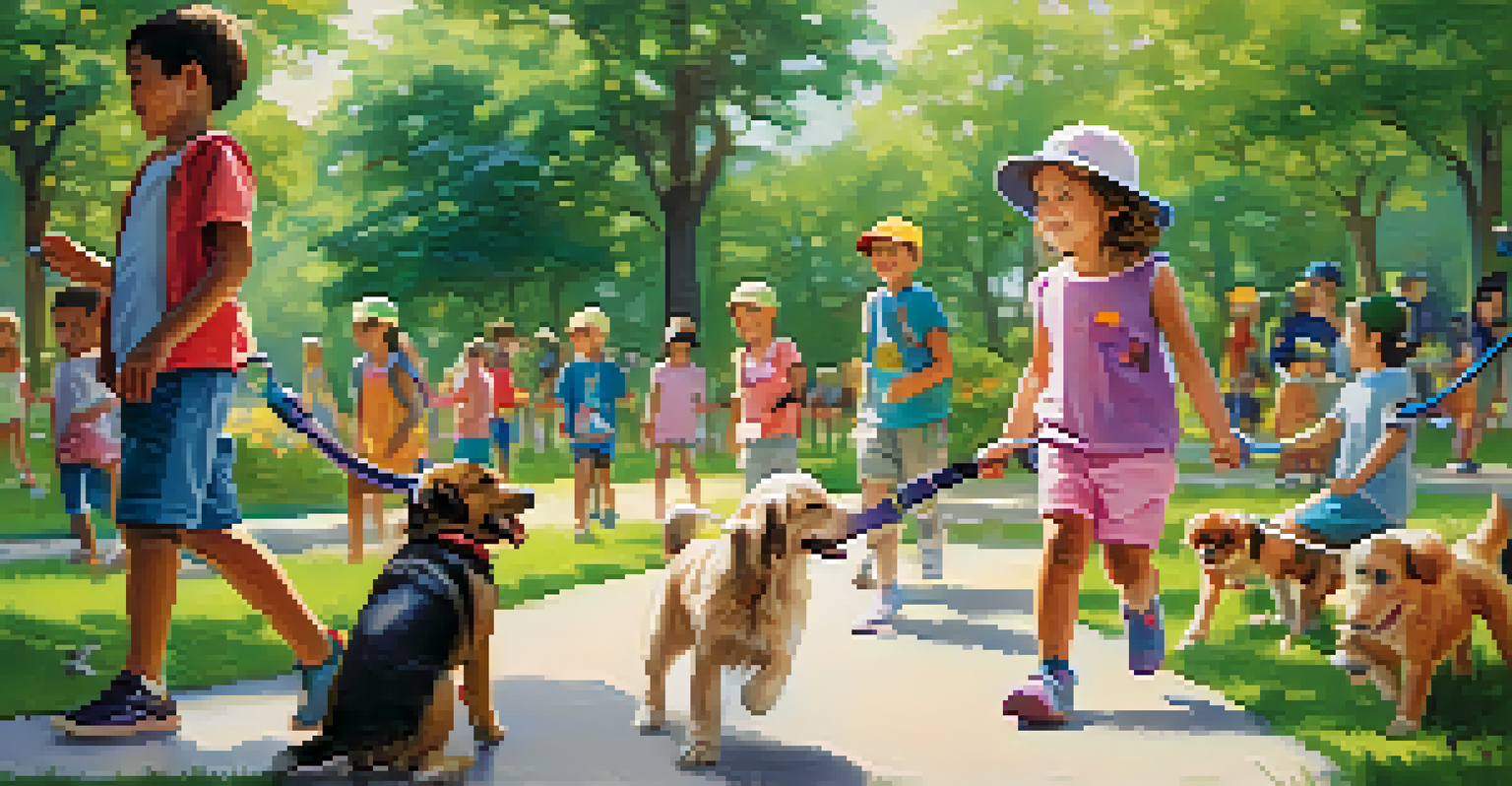How Pets Foster Empathy and Compassion in Children

The Bond Between Pets and Children Enhances Emotional Learning
Pets often become a child's first friend, providing a unique bond that teaches emotional connections. Through caring for a pet, children learn to recognize and respond to the feelings of another being. This relationship fosters an understanding of unconditional love and loyalty, critical components of empathy.
Until one has loved an animal, a part of one's soul remains unawakened.
For example, when a child sees their dog wagging its tail in joy or a cat purring in contentment, they begin to associate these behaviors with emotions. This awareness can help them develop a deeper understanding of their own emotions and those of others. By nurturing this bond, children learn to navigate their feelings in a healthy way.
Ultimately, the emotional learning that occurs through pet companionship lays a foundation for developing empathy as they grow. It encourages kids to express their feelings and respond to others with kindness, building a strong emotional intelligence that will serve them well throughout life.
Caring for Pets Teaches Responsibility and Compassion
Having a pet is not just about fun and games; it also comes with responsibilities that teach children compassion. Kids learn to feed, groom, and care for their pets, which instills a sense of duty. This responsibility helps them understand that caring for another living being requires effort, patience, and dedication.

When children see their pets rely on them for food, shelter, and affection, they begin to grasp the importance of nurturing others. This connection can lead to a greater sense of compassion, as they learn to put the needs of their pets before their own desires. For instance, a child may choose to spend time with their pet instead of playing video games, showcasing their understanding of selflessness.
Pets Foster Emotional Learning
Children develop empathy and emotional intelligence through their unique bonds with pets.
Moreover, this sense of responsibility can extend beyond pets to other areas of their lives. Children who learn to care for animals may be more inclined to help friends, family members, or even those in need, nurturing a compassionate spirit that lasts a lifetime.
Pets Help Children Develop Social Skills and Empathy
Interacting with pets can enhance children's social skills, which plays a significant role in developing empathy. When kids engage with their pets, they practice communication and body language, essential skills that translate to human interactions. This playful interaction creates a safe space where children can express themselves without fear of judgment.
The greatness of a nation and its moral progress can be judged by the way its animals are treated.
For instance, a child who talks to their dog about their day might learn to articulate their thoughts and feelings more clearly. This practice can lead to improved relationships with peers as they become better at understanding and responding to the emotions of others. By learning to relate to their pets, they simultaneously enhance their ability to connect with friends and family.
Additionally, group activities involving pets, such as dog training classes or pet playdates, can foster teamwork and cooperation among children. These experiences not only strengthen their social skills but also deepen their capacity for empathy and understanding, as they navigate group dynamics with their furry friends.
Observing Pets in Pain Teaches Children Empathy
Experiencing or witnessing a pet's discomfort can be a powerful lesson in empathy for children. When pets are unwell or injured, kids often feel a strong emotional response, prompting them to care for their furry friends. This situation can serve as a gentle introduction to understanding suffering and the importance of helping others in need.
For instance, if a child sees their pet limping or acting differently, they may become anxious and concerned about its well-being. This instinctual reaction highlights their ability to empathize with the pain of another living being. Through these experiences, children learn to recognize that not everyone is always okay and that they can make a difference through their actions.
Caring for Pets Teaches Responsibility
By caring for pets, children learn vital lessons in compassion, selflessness, and duty.
By guiding children through the process of caring for a sick pet, parents can reinforce lessons in compassion and empathy. This not only helps kids develop a sense of responsibility but also nurtures a desire to help others, whether they are pets or people, creating a more compassionate world.
Pets Encourage Emotional Expression in Children
Pets often become confidants for children, providing a safe outlet for emotional expression. When kids talk to their pets about their feelings, they practice articulating emotions in a non-threatening environment. This interaction can help them understand and manage their emotions better, paving the way for empathy towards others.
For example, a child who is upset after a tough day at school may find solace in talking to their cat or dog. This act of sharing can serve as a form of emotional release, allowing them to process their feelings in a healthy way. As they express their emotions, they also learn the importance of being vulnerable, which is a key aspect of developing empathy.
Furthermore, pets respond to their owners' emotions, offering comfort and companionship when needed. This reciprocal relationship teaches children that emotional support is vital and encourages them to extend that same support to friends and family, fostering a compassionate approach to relationships.
Teaching Kindness Through Pet Care Activities
Engaging in pet care activities can be a fun and effective way to teach children kindness. Simple tasks, such as walking the dog or cleaning the cat's litter box, provide opportunities for kids to learn valuable life lessons. These activities can spark conversations about the importance of kindness and respect for all living beings.
For instance, a family that volunteers at an animal shelter can instill a sense of community and generosity in their children. By witnessing the impact of their actions, kids learn how kindness can change lives, both for animals and people. This hands-on experience reinforces the idea that every act of kindness counts, no matter how small.
Pets Promote Social Skills
Interacting with pets enhances children's communication and social skills, helping them connect better with others.
Moreover, these activities can create lasting memories and strengthen family bonds. As children work together with their parents to care for pets, they develop teamwork and communication skills, turning pet care into a meaningful lesson in compassion and empathy.
Pets as a Gateway to Understanding Diversity and Differences
Having pets of various breeds and species can introduce children to the concept of diversity. Each pet has its own unique personality, needs, and characteristics, which can teach kids to appreciate differences. This understanding can extend beyond animals to humans, fostering a more inclusive mindset.
For example, a child with a shy cat may learn to be patient and understanding, while one with a playful dog may develop a sense of humor and adaptability. These lessons can help children navigate relationships with peers from different backgrounds, teaching them to embrace diversity in all forms.

As kids learn to accept and love their pets for who they are, they naturally become more accepting of others, regardless of their differences. This growing awareness can lay the groundwork for a compassionate and empathetic worldview, crucial in today's diverse society.